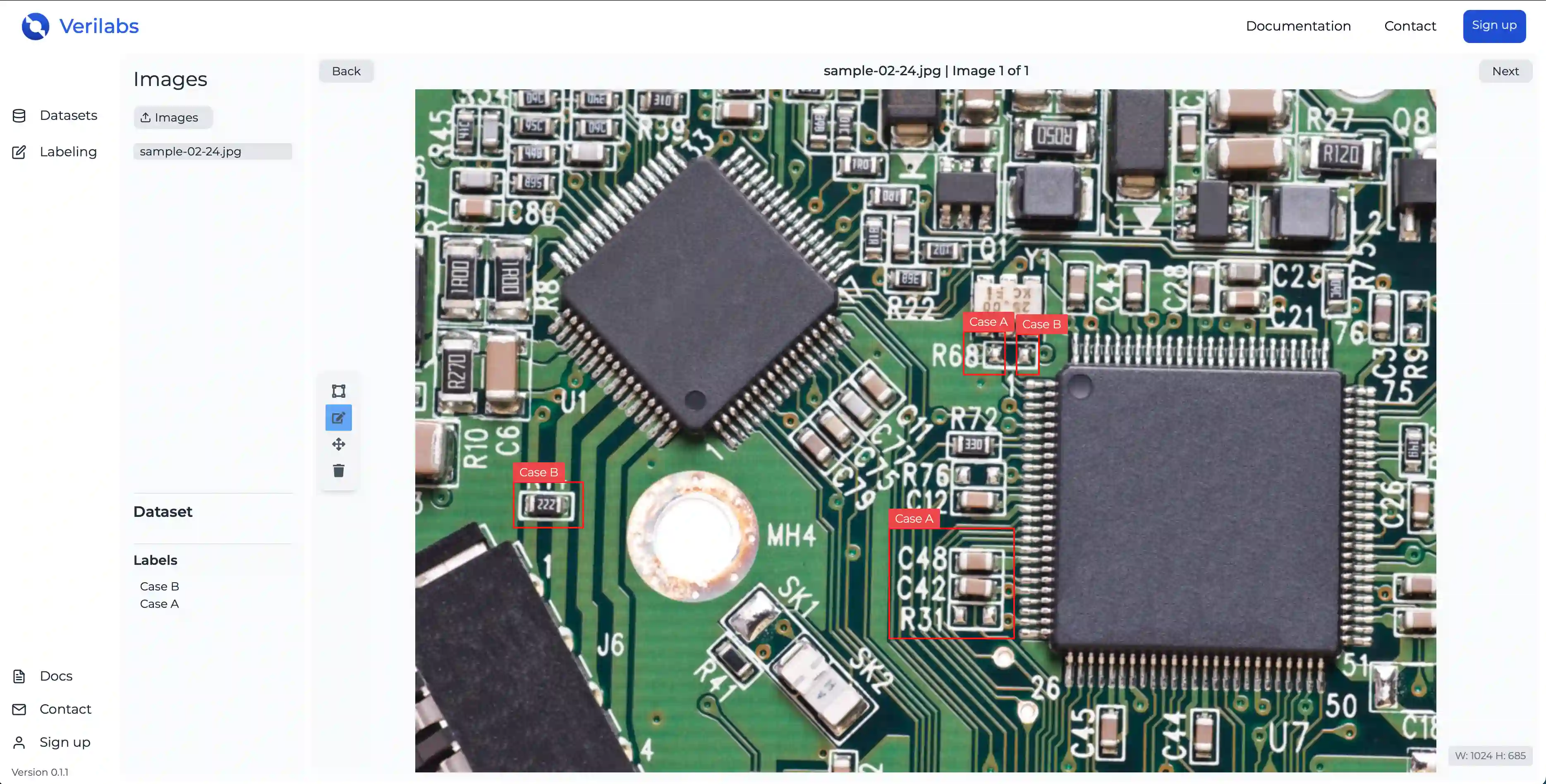Verilabs: In-Browser Image Labeling Tool for Automated QA

Designed and developed Verilabs, a free, in-browser tool for image labeling in object detection, aimed at enabling more flexible and private industrial quality inspection systems.
The Challenge
Traditional industrial visual inspection systems often suffer from rigidity, high costs, and a lack of flexibility, making it challenging for companies to adapt to evolving quality control needs. Furthermore, the sensitive nature of manufacturing data creates significant hesitation among companies to share their images with external vendors for processing or labeling. This results in:
Inefficient Data Labeling: A bottleneck in preparing custom datasets for modern computer vision models.
Privacy Concerns: Reluctance to use cloud-based tools due to the need to keep proprietary images in-house.
Systemic Limitations: Existing solutions often fail to meet the diverse and nuanced requirements of different industries (e.g., food processing vs. metal production), or they depend on unreliable network connections in production environments.
My goal was to explore a path toward building more adaptable, private, and streamlined industrial inspection systems.
My Solution
As part of a broader vision for next-generation industrial inspection, I designed and developed Verilabs, a free, in-browser tool for image labeling. Verilabs enables users to efficiently annotate images for object detection (outputting in COCO format), with all processing and data remaining private on the client-side within the browser.
This tool directly addressed the privacy concerns and provided a flexible method for companies to prepare their own high-quality datasets for automated quality inspections. Through extensive market research, including direct conversations with quality managers, I gained deep insights into diverse industry-specific needs, the varying costs of inspection errors, and critical operational constraints such as network reliance.
The strategy was to use Verilabs as a foundational, free offering, demonstrating the power of in-browser labeling. This would then pave the way for a future SaaS extension, offering more advanced labeling features, and ultimately integrating into a complete, comprehensive industrial inspection system, including hardware and local server components for full autonomy.
The Outcome
Demonstrated Privacy-First Approach: Successfully built and deployed a functional tool that keeps sensitive image data entirely private by operating within the browser.
Validated Market Needs: Confirmed the strong demand for flexible, customizable industrial inspection tools, alongside crucial insights into industry-specific nuances and the importance of full-system solutions (hardware/software integration) and offline capabilities.
Showcased Product Strategy: Developed a multi-tiered product roadmap, illustrating the ability to build a free tool as a market entry point for a more extensive SaaS and full-system offering.
Enhanced Expertise in Computer Vision Applications: Gained practical experience in designing tools for real-world computer vision challenges in an industrial context.
Learned Nuances of Niche Markets: Acquired valuable lessons on the specific challenges of selling into conservative industries and overcoming inherent hesitations regarding external data processing.